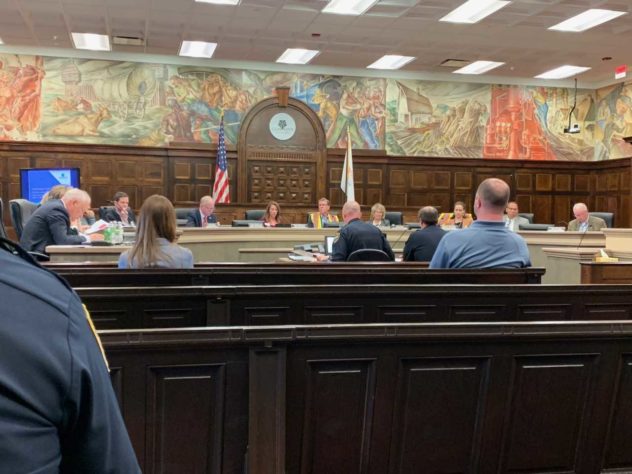CEDAR RAPIDS, Iowa (KWWL) — At Tuesday’s city council meeting The Cedar Rapids Police Department presented a proposal to purchase a new armored rescue vehicle.
The armored vehicle is a 2019 Lenco BearCat G2. According to the Lenco website, the vehicle is capable of carrying 10-12 fully equipped officers and offers high ballistic protection from gunfire.
Although the purchase of the vehicle was already approved in the fiscal 2020 budget, the presentation was required to proceed with a purchase agreement. A City Council Resolution is required for purchases over $50,000, according to Public Safety Communication Coordinator, Greg Buelow.
Police Chief Wayne Jerman and Lieutenant Charlie Fields presented the council with information regarding the need for the armored vehicle and potential uses.
According to Police Chief Jerman, the money to purchase the vehicle would come from the department’s special revenue account also known as the asset forfeiture account.
During the presentation, Jerman said money seized from ‘drug dealers’ would be used to cover the cost. Assuring the council that no levee or taxpayer money would be used to purchase the $268,102 vehicle.
According to Lieutenant Fields, Special Response Team Leader the vehicle would assist the Department in their integrated response, in getting officers and first responders on the scene quickly and safely.
Lt. Fields said the Department’s goal is to minizine the number of people that could potentially die from wounds while waiting on the scene for first responders.
“This would enable us to take firefighters who are certified EMT’s, introduce them into that environment a lot sooner so we can speed the time that the wounded people get to the hospital,” said Fields.
Response to barricaded armed suspects, hostage negotiation, active shooter situations, and service of high-risk search warrants was among the multiple scenarios Lt. Fields cited as times when the vehicle would be used.
“Right now we have no vehicle that is capable of taking sustained gunfire. When we approach a targeted location as law enforcement officers, we use the cover and concealment of neighboring houses, buildings, trees, and cars. Some of those may be occupied or have civilians in the way,” said Fields during the presentation.
Chief Jerman said he wanted to formally present the vehicle purchase to ensure the council was aware what the money was being spent on.


